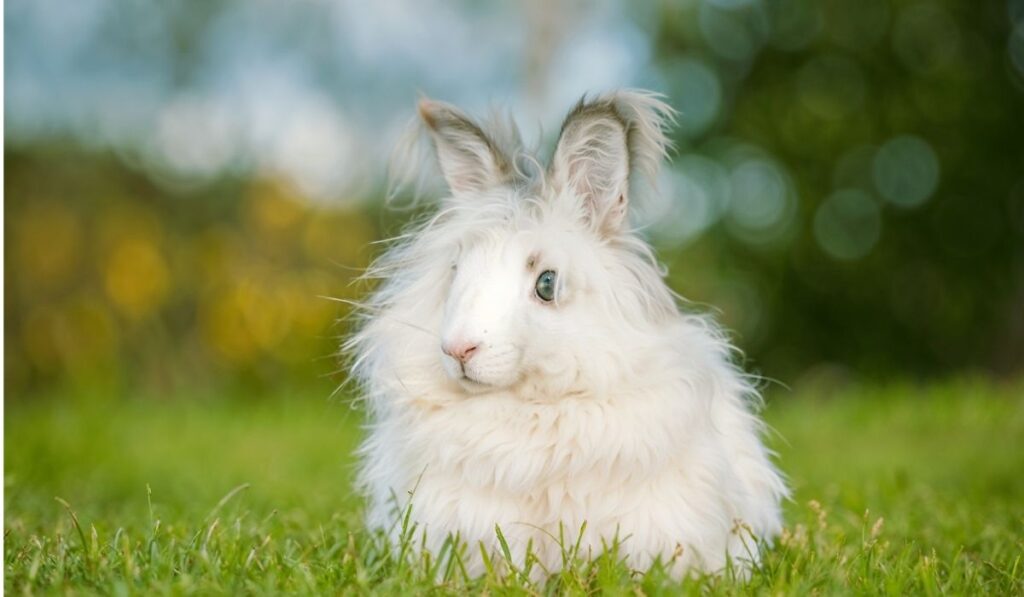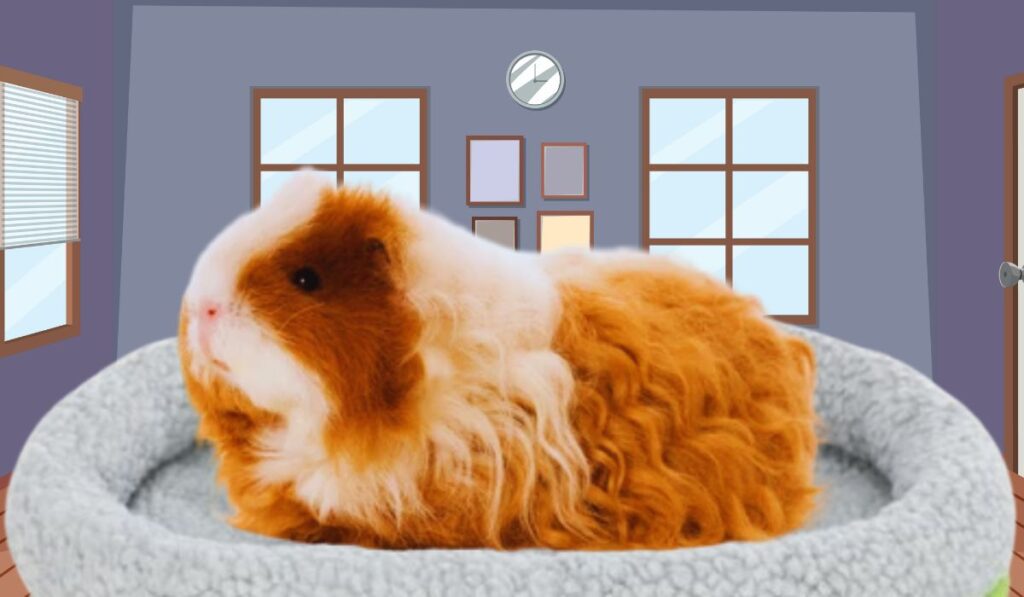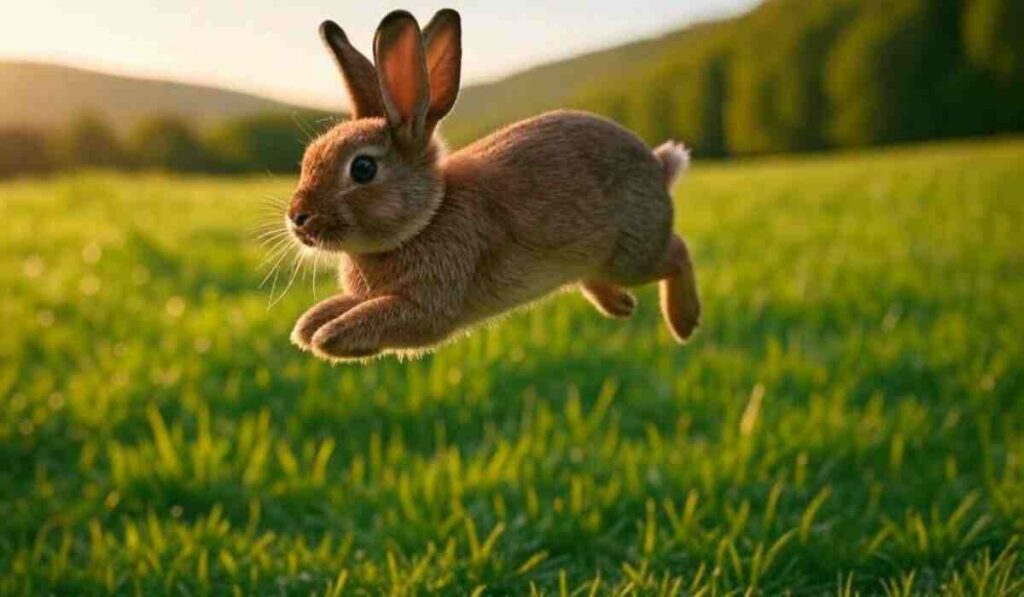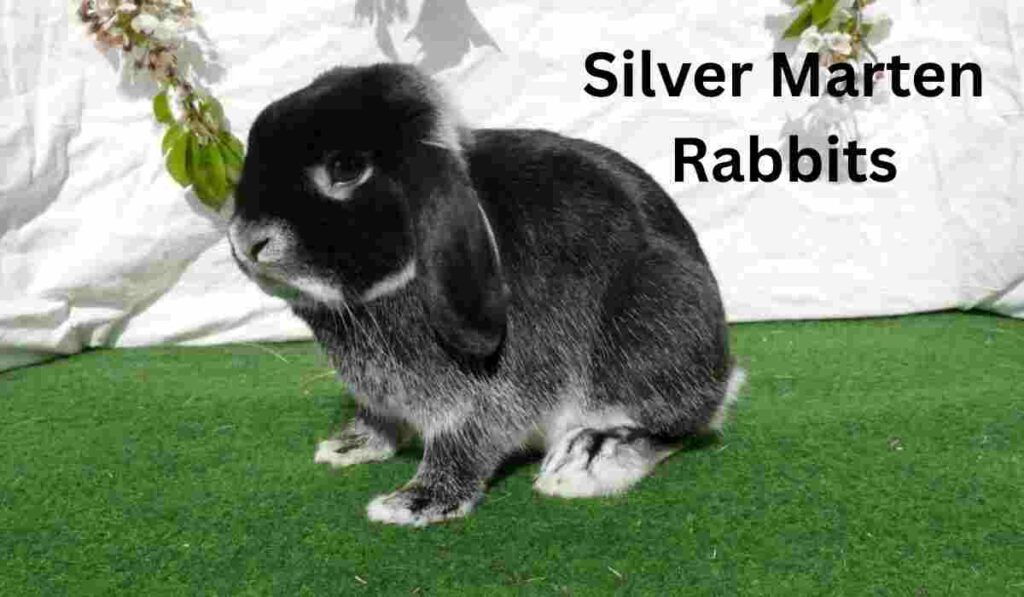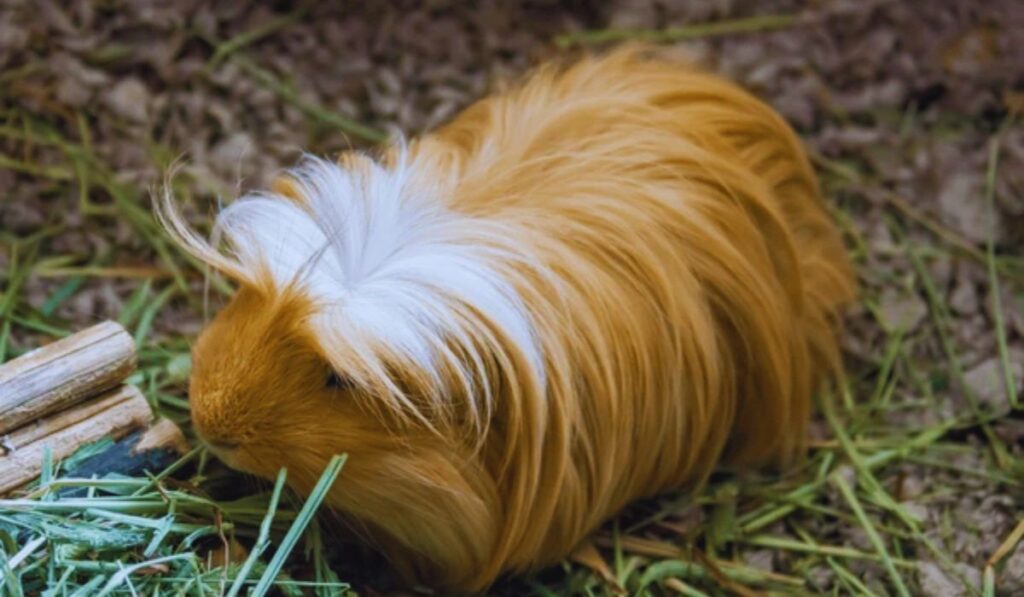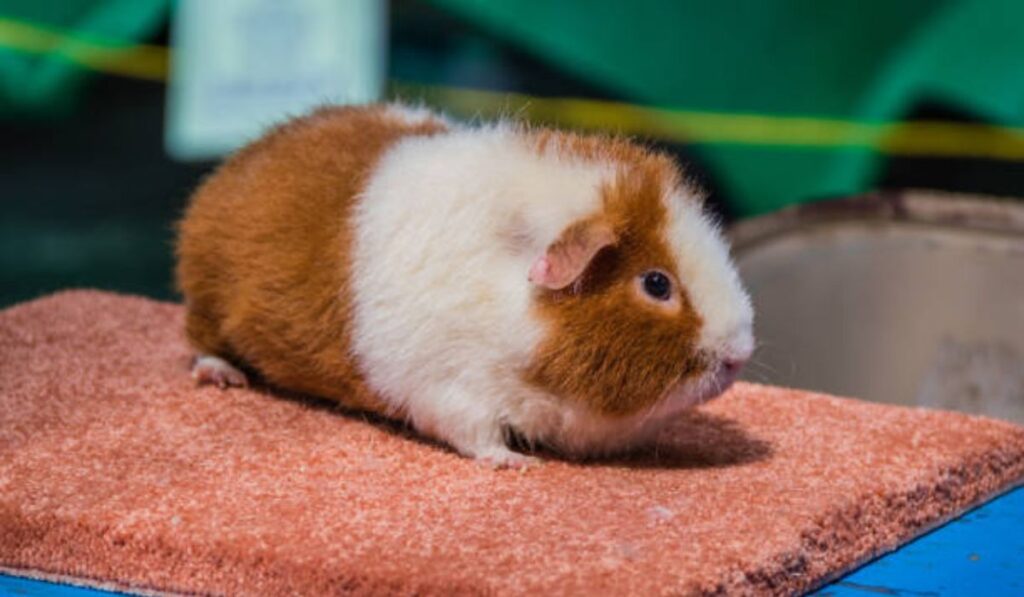Did you know newborn rabbits, known as kits, are born blind and hairless, and completely reliant on a mom who only comes around twice a day? These delicate animals live in concealed nests and develop from hairless pink blobs into hopping curiosities in weeks. And the key is this: touching a wild nest may do more harm than good. Mama rabbits leave the area so as not to attract predators.
What is a Newborn Rabbit Called?
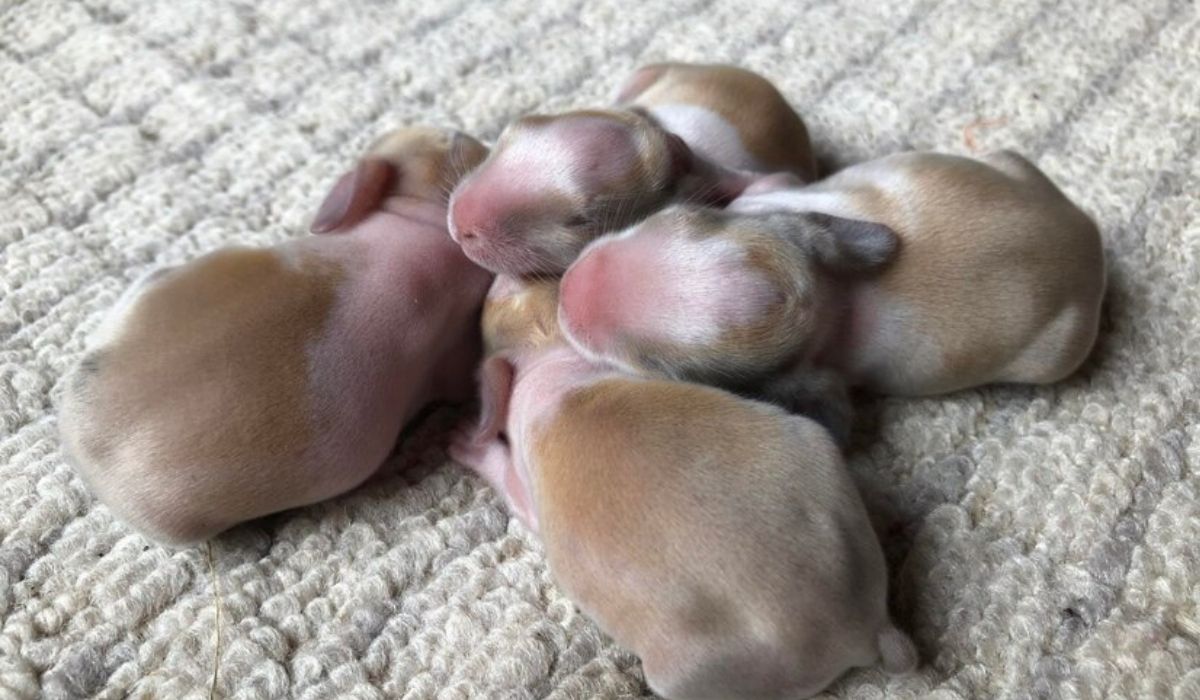
Baby rabbits are known as kits or kittens. These tiny babies are born covered with fine fur, with their eyes shut and without teeth. Does, or mother rabbits, protect their kits in soft nests made of grass and fur? Kits grow fast! Within weeks, they open their eyes, jump out of the nest, and begin devouring greens. Baby rabbits, known as kits, can be found close to their family, or warren, to socialize and learn through play. Note: never touch a wild rabbit’s nest. Mama rabbits come only a few times a day to visit their kits. This helps them stay out of danger!
Physical Characteristics Newborn Rabbit
- Size: Only 2 inches long (thumb size) & 30–40 grams (weight of a strawberry).
- No fur: Hairless, pink, & wrinkly when born — soft fur comes in 1 week.
- The blind deaf: Eyes & ears glued shut: Born blind, deaf. Eyes open at 10–12 days.
- Clean nose: No snot or goo! Discharge = vet visit ASAP.
- Riding the wave: 130–325 bpm (like a drumbeat).
- Rapid respiration: 30–60 breaths/minute.
- Warm body: Normal temp 100.4°F–103 8 degrees F. Hoist yourself in bed with Mom to stay warm!
- Color clues: Fur color (white, brown, gray) depends on bunny family genes.
Growth Stages: Week-by-Week Development
What Do Newborn Rabbits Look Like?
Newborn rabbits, including kits, are small and have thin, soft fur. Their eyes remain closed for a week, and they have no teeth. They have small folded ears and tiny bodies that fit in your hand. They wriggle to stay warm while their mother hides them in a warm nest. If you come across one, leave it — it’s probably not abandoned. Within 2-3 weeks, their eyes open and they begin hopping!
When Do Newborn Rabbits Open Their Eyes?
Kits, or newborn rabbits, open their eyes in approximately 10 days. At first, their vision is clouded, but soon they are exploring. They perk up their ears out of curiosity, wobbling about and sniffing. Now is a good time to start offering timothy hay, oat hay, shallow water in a dish, and soft pellets. Though they continue to nurse from their mother, they will begin nibbling solid food. At 3 weeks they’re active, hopping, and look like little bunnies!
Newborn Rabbit 1-4 Weeks (Growth Stages)
Newborn rabbits grow fast! When they are born, they are small, pink, and bald, warm in the nest. By week 1, soft fur starts showing, and baby bunnies completely depend on their mother’s milk. Day 10-12 (Week 2): Their eyes and ears open and their eyes open and they start making all kinds of cute wiggle motions.
By Week 3, they are hopping and munching hay and pellets and lapping water, though they still require milk. By Week 4, they will be fully furred, playful, and eating more solid food, behaving just like little bunnies! They deserve to have a safe, clean space where they can grow strong.
Newborn Rabbit 4-7 Weeks (Growth Stages)
At 4 weeks, baby rabbits hop, explore, and nibble hay while still nursing. By 5 weeks, their teeth grow fast, and they chew hay and pellets. At 6 weeks, they rely less on milk, dig, and zoom around playfully. By 7 weeks, they are fully weaned, eating adult food, drinking water, and acting like mini pros, ready for big bunny adventures!
Feeding & Nutrition
What Do I Feed a Newborn Rabbit?
At 7 weeks, they are completely weaned, eating adult food, drinking water, and being little pros, ready for big bunny adventures! Mother’s milk is required for newborn rabbits for 2-3 weeks. If the mother is unavailable, use a kitten milk replacer (never cow’s milk).
By week 3, they will begin nibbling on timothy hay and plain pellets. Always have fresh water available in a shallow dish. No fruits, veggies , or treats — they can upset their stomachs. They should be eating mostly hay and pellets by 4-6 weeks of age as per adult rabbits.
How to Feed Newborn Rabbits?
Newborn bunnies require kitten milk replacer (KMR) or goat’s milk—never cow milk! Administer 5–10cc (small spoon fuls) 2–3 times daily. Always warm the milk, always a vertical (little bottle baby! Then delicately wipe its face afterward. Never feed them cold milk or tilt them backward — it chokes them! Soft hay and pellets at 2-3 weeks old. You may want to ask a vet if you’re unsure—kits need extra care!
Newborn Rabbit Food
So they require mum’s milk daily for at least 6-8 weeks – this is critical for growth! 🍼 If mama’s not around, get kitten milk replacer from a vet (never cow milk!). At 2-3 weeks add soft timothy hay and plain pellets for chewing. By 6 weeks, they primarily consume hay, pellets, and freshwater. Hold off on veggies until 12 weeks—their little tummies need to toughen up!
What to Feed Baby Rabbits Without a Mother?
If you discover a baby bunny that has no mother, KMR Kitten formula (available at pet stores) — never puppy formula or Esbilac. If KMR isn’t available, use plain goat’s milk (the kind sold by the carton at grocery stores). This is a temporary solution until you can bring them to a wildlife rehabber.
Rehabbers provide appropriate care for them, help them get comfortable with other rabbits, and prepare them for safe release. Never be a small-pet mom such as a bunny for very some time — wild bunnies need specialist attention to stay wild! Always fucking act fast, to give them a fighting chance.
Are They Getting Fed?
A checked sign when baby rabbits are fed is a round belly and calm behavior. If they cry, seem cold, or have wrinkled skin, they might be hungry. Mother rabbits feed just once or twice a day, usually overnight. If you’re in doubt, peep in their tummies in the morning. An empty belly or weakness means they need help. They should be handled with care always, and expert advice should be sought if necessary.
Caring for Newborn Rabbits
How to Care for Newborn Rabbits?
Provide newborn rabbits with blue rabbits, fur, wool blankets, or clean cotton bedding in a warm, quiet, dark box. Keep it at 68-72°F, and use a heating pad under half the box if you have to. To reduce stress, don’t handle them. If the mother is no longer around, feed a kitten milk replacer (never cow’s milk). Maintain their space calm, and daily assess for warmth, cleanliness, and feeding. If orphaned, consult with a wildlife rehabber.
How to Care for a Newborn Rabbit?
Be sure to keep newborn rabbits warm, safe, and with mama if you can. She nurses them at night. If their appearance is weak or cold or abandoned keep them in a soft nest with a heating pad under half of it. Provide kitten milk replacer twice a day but do not force a feed. Avoid handling too much. Reach out to a wildlife rehabber if necessary. They also use hay by the time they are 3 weeks old.
How to Take Care of Baby Bunnies With a Mom?
For moms and babies, keeping their area quiet, safe, and clean — and never disturbing them, since moms nurse at night — is paramount. If you want her to be healthy, feed mom with fresh veggies, hay, and pellets. You weigh babies every day: round bellies, they’ve eaten; if they’re chilled and skinny, you call a rehabber quick. 3-4 weeks old: Start giving soft greens/hay. Never divide babies until mom ignores them. If in doubt, call a wildlife expert — they make sure families get raised for release! Trust pros for best results.
How to Care for Newborn Wild Rabbits?
“Human intervention will do more damage,” they added. If you happen upon newborn wild rabbits, do not touch them unless they’re in danger. Put them in a dark box on soft bedding with heat. Do not touch — stress can kill. Never feed cow’s milk! If they’re warm and still quiet, their mother might come back. Do not wait if they’re cold, hurt , or crying — call a wildlife rehabber immediately. If you’re raising a wild rabbit alone, it usually doesn’t work — experts ensure they have the best shot at surviving and being placed back in nature.
How to Care for Domestic Baby Rabbits
Keep baby rabbits warm, and safe, in a quiet place and provide soft bedding. Allow mother to take care of them and fill their bellies. Give mom lots of hay, veggies, and pellets for good milk. Introduce water and hay at 3 weeks. Do not separate them unless necessary. If the baby seems weak or cold, get the baby to a rabbit-aware vet as soon as possible.” When you treat your kits well, good kits grow up fast!
Can You Touch Newborn Rabbits?
Yes! You can handle newborn domestic rabbits — moms don’t reject babies if you do so gently. She is accustomed to human smells (from feeding/petting). Do a quick health check on kits, but keep it short to avoid causing stress. Wash your hands first — germs are bad for babies! If mom is acting upset or ignoring them, consult a rabbit-knowledgeable veterinarian for assistance. Trust her connection with you — she knows you’re safe! Careful contact saves lives.
Newborn Rabbit Behavior
Newborn rabbits (kits) are hairless, eyes shut, and are 100% dependent on mama’s milk and body heat. They cuddle close to stay warm and require mama’s gentle licks to pee/poop. Never approach the nest — they can die from stress! If you spot kits, look for mom nearby (she feeds at dawn/dusk). If it’s cold or injured, call a wildlife rehabber RIGHT AWAY — they’re going to replicate mom’s care. Agent’s voice: Survival depends on expert help — act fast, stay calm!
Safety & Survival
Are The Babies in Danger?
Yes! Newborn rabbits are incredibly delicate — being cold, hungry, or stressed can be fatal within minutes. The risks go up for preemies, infections, or rough births. Caring for a new born baby’s weak cries, no weight gain, or mom tuning them out signals emergency Watch closely: weak cries, no weight gain, or mom ignoring them mean an emergency If the babies are cold or limp and not eating (you can check belly plumpness), please call a vet or rehabber NOW. Expert care is crucial for survival — do not delay! Pro help cuts risks. Time is of the essence — the first few weeks make all the difference! Trust pros to save them.
Newborn Cottontail Rabbit (Differences & Survival Tips)
Newborn cottontails have no scent to avoid predators, and their moms feed them only twice a day. Finding one alone doesn’t mean it’s abandoned. Unlike pet bunnies, they can’t survive in captivity—stress kills fast! If injured or cold, call a wildlife rehabber. Never feed cow’s milk; use kitten formula short-term. Cottontails grow quickly and are ready to be on their own in just 3-4 weeks.
Fun Facts
Newborn Rabbits Facts
- Kits, newborn rabbits, are born hairless, blind and deaf — they are 100 percent dependent on mom’s milk and warmth.
- They huddle closely together for warmth and require mom’s assistance to pee/poop (she licks their tummies!).
- Eyes open at 10 days — they first explore at 3 weeks but linger in the nest until 8 weeks.
- Do not disturb kits unless lifesaving — stress kills! If mom’s out of the picture, contact a rehabber quickly — survival requires specialized care.
- Wild kits are not abandoned — moms feed 1-2 times daily at dawn/dusk. Quiet = healthy! Trust nature — act only if they’re hurt or cold.
Males or Females? (How to Tell the Difference)
- Genital Shape: Circular “tube” extending with a hole at the tip.
- Genital Form: Slit-like opening, no tube.
- Distance: Area between anus and genitals is longer.
- Distance: The distance from the anus to the genitals is shorter.
- Safety Tips: Handle gently! Support body, gently press near tail. If in doubt, consult a vet — sexing newborns is hard!
Conclusion
Newborn rabbits, known as kits or kittens, are born blind and hairless and depend solely on their mother’s milk and body heat to survive. They grow quickly, opening their eyes by 10 days, nibbling solids by 3 weeks, and weaning by 7–8 weeks. Orphans require kitten milk replacer (not cow’s milk). Warm them, touch them as little as possible, and get to an expert for wild kits.
Newborn rabbit can die from stress, cold, or improper feeding. Home kits put up with human contact; wild ones need wildlife rehabbers to survive. Professional assistance promptly and respect for natural behaviors guarantee healthy development into adult, playful, independent canines.
Frequently Ask Questions (FAQs)
How can I tell if a newborn rabbit is healthy?
Check for a round belly (indicates feeding), clean nose (no discharge) and calm demeanor. Better scrunched up and crying than wrinkled skin—call a vet or wildlife rehabber quickly!
What should I do if I accidentally disturb a wild rabbit nest?
Carefully cover the nest and leave right away! Mama rabbits skip the area to keep kits safe from predators. Being close by carries the danger of being abandoned.
When can baby rabbits start eating solid food?
At 3 weeks, kits eat timothy hay and pellets. No veggies until 12 weeks — their tummies are too delicate.”
How do I keep orphaned newborn rabbits warm?
Use a heating pad under half a box (68–72°F) with soft bedding. Never overheat—let them move away from the warmth if needed.
Why do mother rabbits leave their kits alone?
It’s natural! Wild mothers come, often only once or twice a day (rarely at dawn/dusk) not wanting to attract predators. Quiet kits = healthy kits—only intervene if injured or cold.




